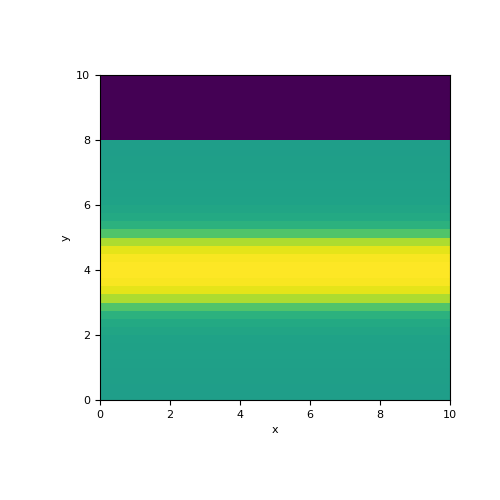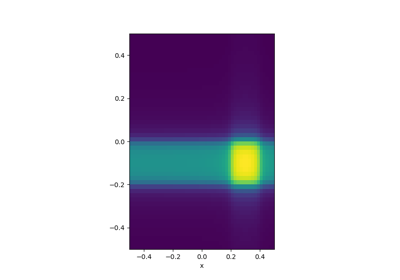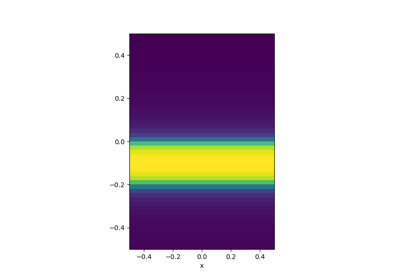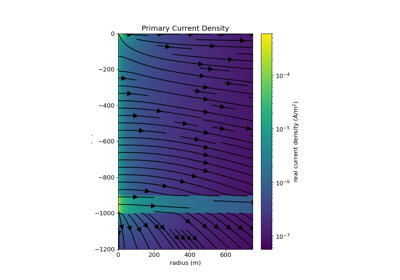SimPEG.maps.ParametricLayer#
- class SimPEG.maps.ParametricLayer(mesh, **kwargs)[source]#
Bases:
BaseParametricMapping for a horizontal layer within a wholespace.
This mapping is used when the cells lying below the Earth’s surface can be parameterized by horizontal layer within a homogeneous medium. The model is defined by the physical property value for the background (\(\sigma_0\)), the physical property value for the layer (\(\sigma_1\)), the elevation for the middle of the layer (\(z_L\)) and the thickness of the layer \(h\).
For this mapping, the set of input model parameters are organized:
\[\mathbf{m} = [\sigma_0, \;\sigma_1,\; z_L , \; h]\]The mapping \(\mathbf{u}(\mathbf{m})\) from the model to the mesh is given by:
\[\mathbf{u}(\mathbf{m}) = \sigma_0 + \frac{(\sigma_1 - \sigma_0)}{\pi} \Bigg [ \arctan \Bigg ( a \bigg ( \mathbf{z_c} - z_L + \frac{h}{2} \bigg ) \Bigg ) - \arctan \Bigg ( a \bigg ( \mathbf{z_c} - z_L - \frac{h}{2} \bigg ) \Bigg ) \Bigg ]\]where \(\mathbf{z_c}\) is a vectors containing the vertical cell center locations for all active cells in the mesh, and \(a\) is a parameter which defines the sharpness of the boundaries between the layer and the background.
- Parameters:
- mesh
discretize.BaseMesh A discretize mesh
- indActive
numpy.ndarray Active cells array. Can be a boolean
numpy.ndarrayof length mesh.nC or anumpy.ndarrayofintcontaining the indices of the active cells.- slope
float Directly define the constant a in the mapping function which defines the sharpness of the boundaries.
- slopeFact
float Scaling factor for the sharpness of the boundaries based on cell size. Using this option, we set a = slopeFact / dh.
- mesh
Examples
In this example, we define a layer in a wholespace whose interface is sharp. We construct the mapping from the model to the set of active cells (i.e. below the surface), We then use an active cells mapping to map from the set of active cells to all cells in the mesh.
>>> from SimPEG.maps import ParametricLayer, InjectActiveCells >>> from discretize import TensorMesh >>> import numpy as np >>> import matplotlib.pyplot as plt
>>> dh = 0.25*np.ones(40) >>> mesh = TensorMesh([dh, dh]) >>> ind_active = mesh.cell_centers[:, 1] < 8
>>> sig0, sig1, zL, h = 5., 10., 4., 2 >>> model = np.r_[sig0, sig1, zL, h]
>>> layer_map = ParametricLayer( >>> mesh, indActive=ind_active, slope=4 >>> ) >>> act_map = InjectActiveCells(mesh, ind_active, 0.)
>>> fig = plt.figure(figsize=(5, 5)) >>> ax = fig.add_subplot(111) >>> mesh.plot_image(act_map * layer_map * model, ax=ax)
(
Source code,png,pdf)
Attributes
Determine whether or not this mapping is a linear operation.
The mesh used for the mapping
Number of model parameters the mapping acts on; i.e 4
Dimensions of the mapping
Defines the sharpness of the boundaries.
Defines the slope scaled by the mesh.
X cell center locations (active) for the output of the mapping.
Y cell center locations (active) for the output of the mapping.
Z cell center locations (active) for the output of the mapping.
indActive
Methods
deriv(m)Derivative of the mapping with respect to the input parameters.
dot(map1)Multiply two mappings to create a
SimPEG.maps.ComboMap.inverse(D)The transform inverse is not implemented.
mDict(m)Return model parameters as a dictionary.
test([m, num])Derivative test for the mapping.
layer_cont


